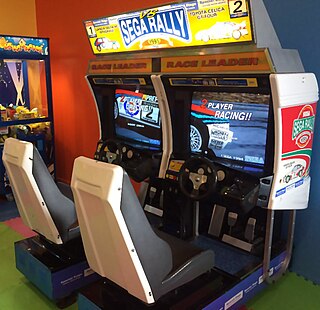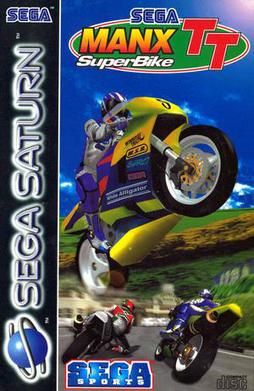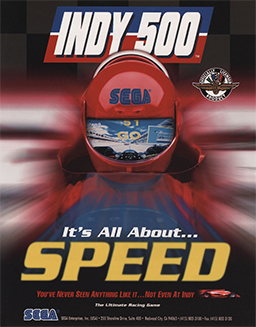
Tetsuya Mizuguchi is a Japanese video game designer, producer, and businessman. Along with ex-Sega developers he is one of the co-founders of the video game development firm Q Entertainment. He formerly worked for Sega as a producer in their Sega AM3 'arcade machines' team, developing games like Sega Rally Championship and Sega Touring Car Championship, before moving on to become the head of Sega's United Game Artists division, the team responsible for Rez and Space Channel 5. Mizuguchi is better known for creating video games that incorporate interactive synesthesia into his game design, regardless of genre, evidenced by Rez, Lumines, Child of Eden, and Tetris Effect.

Virtua Cop is a 1994 light gun shooter game developed by Sega AM2 and designed by Yu Suzuki. It was originally an arcade game on the Sega Model 2 system, and was ported to the Sega Saturn in 1995 and Windows in 1996. The Saturn version included support for both the Virtua Gun and Saturn mouse, as well as a new "Training Mode" which consists of a randomly generated shooting gallery.

United Game Artists (UGA) was a subsidiary of Sega headquartered in Shibuya, Tokyo, Japan. It was founded by Tetsuya Mizuguchi, a video game developer who had experience with Sega's AM3 division. After separating with Kenji Sasaki to form AM Annex, Mizuguchi left Sasaki's team to form another division. This studio would later be known as Sega Consumer Development 4 (CS4) and Research and Development #9 while a department of Sega, before becoming UGA as a wholly owned subsidiary of Sega.

Daytona USA is an arcade racing game developed by Sega AM2 and published by Sega in March 1994. Inspired by the popularity of the NASCAR motor racing series in the US, the game has players race stock cars on one of three courses. It was the first game to be released on the Sega Model 2 arcade system board. Daytona USA is one of the highest-grossing arcade games of all time.

Sega AM Research & Development No. 3, known as Hitmaker Co., Ltd. from 2000 to 2004, is a defunct division of Sega, a Japanese video game company. Established by 1993, AM3 was managed by Hisao Oguchi and developed a number of arcade games for Sega. Series introduced by AM3 include Virtual On, Sega Rally, Crazy Taxi, and Virtua Tennis. AM3's main focus was on arcade games until the release of the Dreamcast. Additionally, developers Tetsuya Mizuguchi and Kenji Sasaki developed Sega Rally Championship with AM3 before departing to form AM Annex, which later split into Sega AM9 and Sega AM5.

Virtua Racing or V.R. for short, is a Formula One racing video game developed by Sega AM2 and released for arcades in 1992. Virtua Racing was initially a proof-of-concept application for exercising a new 3D graphics platform under development, the "Model 1". The results were so encouraging that Virtua Racing was fully developed into a standalone arcade title.

Sega Rally is a series of 3D racing video games published by Sega. The first game in the series, Sega Rally Championship, was developed by Sega AM3 and released in arcades in 1994. Later games were developed by Sega and Sega Racing Studio.

Virtua Fighter 2 is a 1994 fighting video game developed by Sega. It is the sequel to Virtua Fighter (1993), and the second game in the Virtua Fighter series. It was created by Sega's Yu Suzuki-headed AM2 and was released for arcades in 1994. Ports were released for the Sega Saturn in 1995 and Microsoft Windows in 1997.

Sega Rally 2 is an arcade racing game developed by Sega AM Annex for the Model 3 arcade hardware. It is the sequel to 1994's Sega Rally Championship. The game was first released in arcades in February 1998, and was later ported by Smilebit to the Sega Dreamcast, becoming one of the console's earliest titles when it was released in Japan on January 28, 1999. The Sega Dreamcast version was released in Europe as a launch title on October 14, 1999, and then in North America on November 27. A PC version was released in Japan and Europe that same year, with the North American release following suit in September 2000, where it was published by Mattel Interactive.

F1 Challenge is an officially licensed Formula One game developed by Bell Corporation and produced by Sega for the Sega Saturn. The game contains only three of the many Formula One circuits – Hockenheim, Monte Carlo, and Suzuka – while having another three based on the fictional Neo City, containing three different configurations.

The Lost World: Jurassic Park is a light gun arcade game from Sega. It was released in 1997, and is based on the film of the same name. It is also a sequel to Sega's 1994 Jurassic Park arcade game. A third Jurassic Park arcade game, based on Jurassic Park III, was made by Konami in 2001.

Rad Mobile is a racing arcade game developed by Sega AM3 and published by Sega. It was first published in Japan in October 1990, followed by an international release for arcades in February 1991. Rad Mobile was Sega's first 32-bit game, using Sega's System 32 arcade system board. It was also the first appearance of Sonic the Hedgehog, who appears as an ornament hanging from the driver's rearview mirror.

Sega Touring Car Championship is an arcade racing game released by Sega's AM Annex for the Model 2 mainboard in 1996. It was later ported to the Sega Saturn and Microsoft Windows.

Manx TT Super Bike is a 1995 arcade racing game developed jointly by Sega AM3 and Sega-AM4. It is a motorcycle racing game built for the Sega Model 2 arcade board. Up to 8 players can race in this game if enough arcade cabinets are linked together, following on from Daytona USA. It was later ported to the Sega Saturn by Tantalus Interactive and to Windows by Perfect Entertainment.

Scud Race is an arcade racing video game released by Sega in 1996. It is the first racing game to use the Sega Model 3 hardware. Despite being released well within the lifetime of the Sega Saturn, no Saturn port was ever released. A Dreamcast port was announced for the system's 1998 launch lineup and was shown as a tech-demo in the Dreamcast Presentation in 1998, but was cancelled.

The Need for Speed is a 1994 racing game developed by EA Canada, originally known as Pioneer Productions, and published by Electronic Arts for 3DO in 1994. It allows driving eight licensed sports cars in three point-to-point tracks either with or without a computer opponent. Checkpoints, traffic vehicles, and police pursuits appear in the races.

Daytona USA: Championship Circuit Edition, or Daytona USA: Circuit Edition in Japan, is a racing game by Sega, specifically designed for the Sega Saturn. Released in 1996, it is a reworked and extended version of the original Daytona USA, and was developed by Sega AM3, the same team that oversaw the Saturn port of Sega Rally Championship, by using a modified version of the Sega Saturn engine of Sega Rally Championship.

Indy 500 is a 1995 arcade racing game developed by Sega AM1. Based on the IndyCar Series, the game possesses a license from the Indianapolis Motor Speedway, home of the Indianapolis 500, and includes the speedway as one of its courses. Indy 500 was AM1's second game developed using 3D computer graphics and their first to utilize color textures. While planned as a Model 3 arcade system board release, delays in the hardware's completion led to use of the Model 2 instead. A Sega Saturn port was planned, but later canceled. Reception to Indy 500 was mixed, with some critical comparison to other games such as Sega AM2's Daytona USA and Namco's Ace Driver and Rave Racer.

Top Skater is an arcade skateboarding sports video game released by Sega in 1997, and built on the Sega Model 2 hardware. It was one of the first arcade games to feature a skateboard controller interface. The game was directed by Kenji Kanno.

DecAthlete, released in Europe as Athlete Kings due to a licensing issue, is a track-and-field themed arcade sports video game. On its unveiling, the gaming media generally described it as a modern clone of Daley Thompson's Decathlon. Released in 1996, it was developed by Sega AM3 and produced by Sega. A home port was released on the Sega Saturn in 1996, largely identical to the arcade version, due to the similar hardware of the ST-V hardware and the Saturn. It was released on the PlayStation 2 in Japan only as part of the Sega Ages 2500 series. Compared to other decathlon based games, Decathlete has a more comic and cartoon-like style. A sequel followed in 1997, which was the winter sports-based Winter Heat.




















